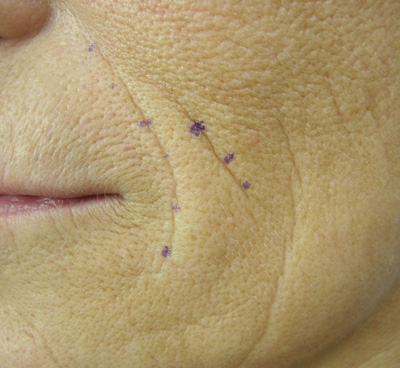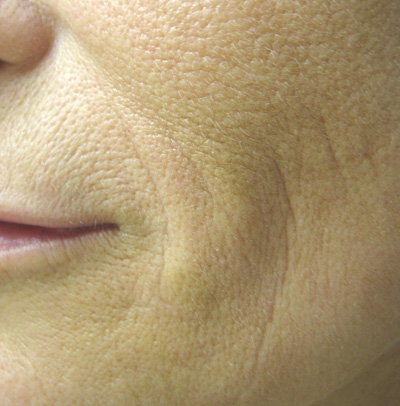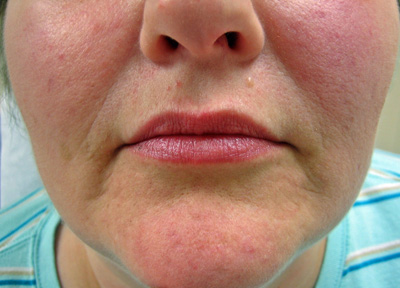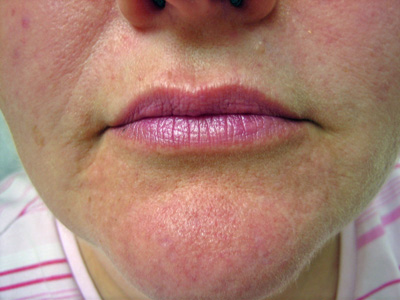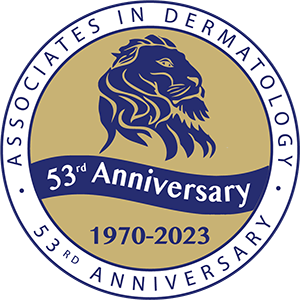Juvéderm / Restylane / Voluma / Radiesse
Our skin contains collagen and elastin fibers which create the smooth and “plump” appearance we see in youthful skin. Another naturally occurring component of our skin is hyaluronic acid. Hyaluronic acid binds water molecules and is critical in creating the fullness and texture of healthy skin. With aging and cumulative sun exposure these components begin to deteriorate resulting in skin that tends to sag and appear coarse.
Tisue Fillers are composed of hyaluronic acid and are injected into creases and lines to instantly fill the area. It is the first choice for creating fuller lips and diminishing the vertical “smokers” lines and are most commonly used to minimize the lines around the mouth.
Radiesse and Voluma is used in areas of the face that require more volume such as the pre-jowl sulcus (see photographs below) and more pronounced nasolabial folds and marionette lines. Radiesse is very effective in volumizing areas of the face that tend ‘deflate’ during the aging process. Radiesse is ideal for re-creating the “apple cheek” which helps to minimize lines under the eyes (tear trough) creating a more youthful appearance. Radiesse and Voluma is comprised of a biodegradable, biocompatible substance called calcium hydroxylapatite and has also been safely used in dental, orthopedic and in vocal cord procedures.
Both Radiesse and hyaluronic acid fillers (such as Juvederm) are commonly used to fill creases and folds around the mouth but because of Radiesse’s greater density it is a better choice for filling a deeper wrinkle. These two different substances are often used together to achieve the desired effect. An analogy between these two products would be to think of Radiesse as the soft spongy ‘cake’ used to create structure and foundation and Juvederm as the icing to smooth and fill fine cracks.
These fillers, unlike collagen, are non-animal based and thus requires no allergy testing and carry no risk for infectious disease transfer.
The procedure is simple and is performed in the office. The patient is given several injections of an anesthetic, similar to that given by a dentist. This creates a painless procedure. Most common side effect is bruising which typically resolves by 4 to 7 days.
Radiesse
Radiesse is an injectable filler used to correct deeper facial folds and wrinkles. Upon injection Radiesse immediately adds fullness to your face giving visible results after the first treatment session. Radiesse appears as a soft white paste and is stored in individually packaged sterile glass syringes. This paste is comprised of tiny beads of calcium hydroxylapatite, a biodegradable, bio-compatible substance which does not require allergy testing and has no risk of transmitting disease such as hepatitis or HIV. Calcium hydroxylapatite has a history of safe use in dental, orthopedic and vocal cord procedures.
Radiesse is not a permanent filler; however its effect usually lasts one year. Research has also found that Radiesse stimulates your own tissue to grow around these tiny microspheres thus giving a more permanent effect.
Radiesse is used in areas of the face that require more filling volume such as the nasolabial folds, marionette lines, and the pre-jowl sulcus (see photographs below). Radiesse is very effective in volumizing areas of the face that tend ‘deflate’ during the aging process: hollowed cheeks can be made fuller and more youthful and cheek bones can be accentuated creating a more youthful appearance.
Both Radiesse and Restylane are commonly used to fill creases and folds around the mouth but because of Radiesse’s greater density it is a better choice for filling a deeper wrinkle. These two different substances are often used together to achieve the desired effect. An analogy between these two products would be to think of Radiesse as the soft spongy ‘cake’ used to create structure and foundation and Restylane as the icing to smooth and fill fine cracks. Radiesse is not the preferred filler for plumping lips (see Restylane).
The procedure is performed in our office either with topical numbing or under local anesthesia (injected into the skin through a small needle). Nerve blocks, like those given by your dentist causing numbness around the lips and nose, are commonly given to provide maximum comfort during the procedure. The entire process usually lasts between 25 to 30 minutes.
The most common side effect is bruising. In our office we try to limit bruising by application of ice and pressure before, during and after the injections. Bruising can also be minimized by discontinuing medications and supplements such as aspirin, NSAIDS, Vitamin E & C, and ginkgo a week prior to the procedure (see note below). We also suggest that the patient try snacking on pineapple a week prior to the procedure as it contains the enzyme bromelain which is believed to naturally reduce bruising. For those who must be able to conceal the inevitable bruise we recommend buying Dermablend make up products prior to the procedure.
Other possible side effects include small lumps beneath the skin (granulomas) which can temporary and can be easily removed by through a tiny incision.
Note: patients with a history of heart attack or stroke or those who have been prescribed blood thinners such as aspirin to avoid these conditions, should continue their medication and inform Dr. Coker at the time of consultation.
Glossary:
Nasolabial Fold: the pair of wrinkles that run from the corner of your nose to the corner of your mouth.
Marionette Lines: the paired creases/wrinkles that extend from the corner of the mouth the jaw line.
Pre-jowl Sulcus: the indentation of skin at the jaw line that separates the chin from the jowl. It accentuates of the sagging skin of the mandible (jaw line).
Learn more from the manufacturere at www.radiesse.com


